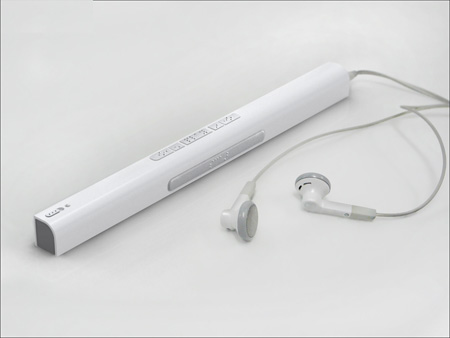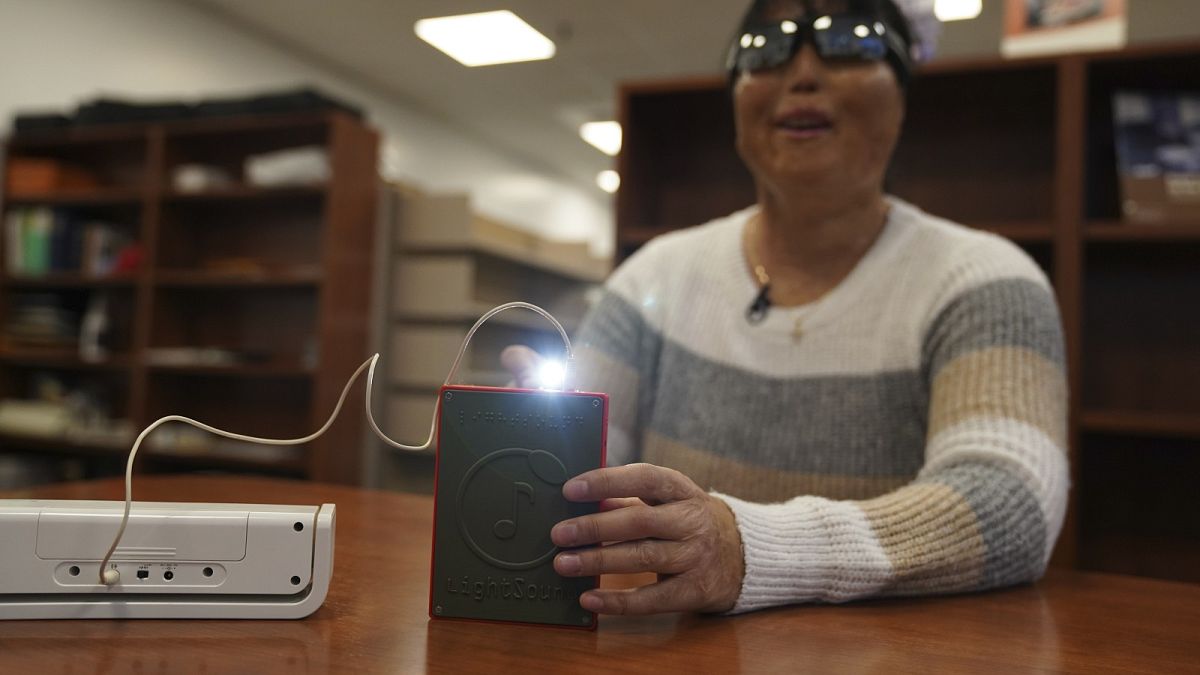Discover Cutting-edge Devices Designed for the Aesthetically Impaired
The advancement of innovative tools for the visually damaged stands for a considerable development in ease of access and independence. Technologies such as clever glasses with AI capabilities and mobile applications made to offer acoustic descriptions are improving daily experiences for individuals.
Smart Glasses for Navigating

Smart glasses developed for navigation are reinventing the way visually impaired individuals communicate with their setting. These advanced devices make use of a combination of cam modern technology, synthetic intelligence, and acoustic responses to provide real-time details concerning surroundings. By using barrier discovery systems, wise glasses can notify individuals to possible risks, enabling more secure movement in both familiar and unfamiliar setups.
The assimilation of GPS technology even more improves navigating capacities, permitting customers to obtain acoustic directions as they relocate. This hands-free strategy not only cultivates self-reliance yet also equips aesthetically impaired people to navigate city landscapes with raised confidence. Furthermore, several wise glasses are outfitted with attributes that recognize sites and street indicators, supplying contextual details that improves the customer experience.
Moreover, the growth of these devices is continuously advancing, with firms functioning to boost the accuracy of item acknowledgment and broaden the array of navigational functions. As smart glasses come to be a lot more accessible and affordable, they hold the potential to dramatically change everyday life for visually impaired customers. Inevitably, these cutting-edge tools stand for a crucial action toward inclusivity, offering enhanced wheelchair and a better sense of autonomy for individuals navigating the globe around them.

Mobile Application for Daily Living
Exactly how can mobile applications improve the day-to-days live of aesthetically damaged people? Mobile applications are reinventing the means aesthetically damaged users navigate their atmospheres, take care of daily jobs, and gain access to information. These applications give important support through numerous capabilities, cultivating self-reliance and enhancing top quality of life.
Several innovative mobile applications are made particularly for day-to-day living. For example, applications like Be My Eyes link visually impaired customers with sighted volunteers by means of video clip telephone calls, enabling them to obtain real-time help with tasks such as checking out tags or browsing unfamiliar rooms. In A Similar Way, Seeing AI, established by Microsoft, makes use of artificial intelligence to describe surroundings, checked out message, and recognize objects, effectively transforming a smart device into a powerful tool for daily aid.
In addition, navigating apps customized for the aesthetically impaired, such as Aira and BlindSquare, supply audio-based instructions and environmental information, making it possible for customers to traverse their environments securely and confidently. Beyond navigating and prompt assistance, mobile apps additionally sustain organization and job monitoring, with attributes that assist individuals establish tips, develop order of business, and track consultations. In recap, mobile applications work as indispensable sources, empowering aesthetically impaired individuals to lead even more independent and satisfying lives.
Wearable Technologies for Assistance
Empowerment via innovation is progressively obvious in the realm of wearable tools designed to aid aesthetically impaired people. These innovative tools integrate effortlessly into life, boosting navigating and supplying essential feedback to users. For example, clever glasses outfitted with video cameras can check out and recognize faces text out loud, enabling individuals to engage even more confidently in social and expert settings.
Another significant development is the use of haptic comments systems in wearable gadgets. These systems utilize resonances or other responsive signals to communicate information concerning the customer's environment, such as challenges or changes in surface, enhancing mobility and safety and security. Wearable technologies also include wristbands that attach to smart devices, signaling customers to notices through subtle resonances, thus improving connection without reliance on aesthetic cues.
As these technologies remain to develop, they are not only boosting self-reliance for visually damaged individuals anchor but also promoting a greater sense of incorporation in society. By linking the gap between obstacles encountered in everyday living and the possibility for autonomy, wearable technologies work as essential devices in the pursuit for equal rights and empowerment for those with aesthetic impairments.
Sound Summary Devices
Audio summary tools play an essential duty in improving accessibility for visually damaged people, offering them with the capability to engage with aesthetic media. Voice-activated assistive devices. These tools provide narrated descriptions of crucial visual elements in films, tv programs, and live efficiencies, ensuring that customers can fully comprehend the context and emotions conveyed with visuals
Sound summary can be integrated right into numerous platforms, consisting of streaming solutions, movie theater testings, and live theater. Lots of popular streaming services currently include audio description as an accessibility attribute, enabling viewers to choose it quickly. Along with conventional media, specialized applications likewise exist, giving audio summaries for art exhibits, galleries, and other social occasions.
The effectiveness of audio description hinges on the skill of the storytellers, who should communicate visual information succinctly without diminishing the initial sound. Innovations in this area are likewise leading the way for even more individualized experiences, where customers can change the degree of detail and pacing according to their choices.
Braille Innovations and Devices
Braille tools and developments have substantially changed the method aesthetically damaged people connect with text and info. Modern developments have led to the advancement of flexible devices that boost proficiency and independence among individuals.
Additionally, portable Braille notetakers integrate standard Braille input with modern-day functionalities, assisting in note-taking, organizing, and record modifying on the go. Mobility aids for visually impaired users. These compact tools often include text-to-speech capabilities, linking the gap between Braille and auditory information
In enhancement, cutting-edge Braille printers have emerged, allowing customers to create Braille labels, files, and instructional products efficiently. This access cultivates better involvement in educational and specialist settings, inevitably promoting inclusivity.
Furthermore, research study into clever Braille technologies remains to broaden. Tools that incorporate expert system are being discovered to offer real-time navigation help and contextual details, enhancing the individual experience in diverse setups. Generally, these technologies reflect a commitment to equipping visually impaired people with technology, ensuring they can easily gain access to and involve with the world around them.

Conclusion
The advancement of innovative devices for the aesthetically impaired significantly boosts freedom and top quality of life. These innovations not only foster better incorporation however likewise advertise autonomy in everyday tasks, ultimately adding to an extra available and fair society for visually impaired people.
As wise glasses end up being much more accessible and budget-friendly, they his response hold the prospective to dramatically transform everyday life for aesthetically impaired users. Mobile apps are revolutionizing the means aesthetically damaged users navigate their settings, manage daily jobs, and gain access to details. Apps like Be My Eyes attach visually impaired individuals with sighted volunteers using video clip calls, enabling them to obtain real-time aid with tasks such as reading tags or navigating strange spaces.Additionally, navigation apps customized for the aesthetically impaired, such as Aira and BlindSquare, provide audio-based directions and ecological details, allowing users to traverse their surroundings securely and confidently.The innovation of cutting-edge devices for the visually damaged find more information dramatically improves independence and quality of life.